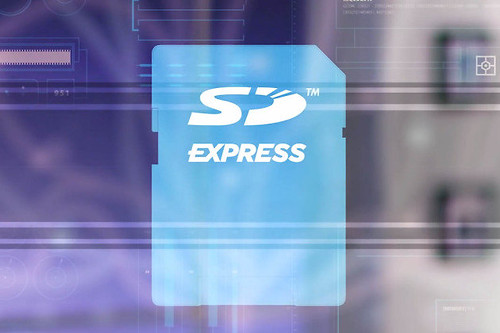
fast, but for who? — Speedy SD Express cards have gone nowhere for years, but Samsung could change that Compatibility issues and thermals have, so far, kept SD Express from taking off.
Andrew Cunningham – Feb 28, 2024 10:58 pm UTC Enlarge / Samsung’s SD Express-compatible microSD cards.Samsung reader comments 56
Big news for people who like (physically) small storage: Samsung says that it is sampling its first microSD cards that support the SD Express standard, which will allow them to hit sustained read speeds of as much as 800MB per second. That’s a pretty substantial boost over current SD cards, which tend to top out around 80MB or 90MB per second (for cheap commodity cards) and around 250MB per second for the very fastest UHS-II-compatible professional cards.
As Samsung points out, that 800MB/s figure puts these tiny SD Express cards well above the speeds possible with older SATA SSDs, which could make these cards more useful as primary storage devices for PCs or single-board computers that can support the SD Express standard (more on that later).
Samsung is currently sampling a 256GB version of the SD Express card, and “will be available for purchase later this year.”
Because this is a tech company announcement in 2024, Samsung also makes an obligatory mention of AI, though there’s absolutely nothing specific the cards are doing to make them particularly well-suited for generative AI tasks other than “be faster.” Adding extra storage to phones or PCs could be useful for on-device generative AIstoring larger language models locally, for examplebut most software companies that are offering generative AI features in their OSes or browsers are mostly using server-side processing to do all the heavy lifting for now. Whats the SD Express standard, again?
The SD Express standard allows SD cards to take advantage of a single lane’s worth of PCIe bandwidth, boosting their theoretical speeds well beyond the 104MB/s cap of the UHS-I standard or the 312MB/s cap of UHS-II (UHS-III exists, but isn’t widely used). The SD Express spec was last updated back in October 2023, which bumped it up from PCIe 3.0 to 4.0; it also defines four speed classes with read/write speeds of between 150MB and 600MB per seconda target these Samsung cards claim to be able to surpass. Advertisement
But the original version of SD Express goes back to mid-2018, when it was added to version 7.0 of the SD specification. And adoption from SD card makers and device makers has been slow to nonexistent so far; AData makes full-size SD Express cards in 256GB and 512GB capacities that you can buy, but that’s about it. Lexar announced some cards back in 2021 that never ended up being released. And even if you had a card, you’d have trouble finding devices that could actually take advantage of the higher speeds since most cameras, phones, and computers have opted to stick with the more common UHS.
One issue blocking SD Express adoption is that the card and the device have to support SD Express to get the promised speeds; an SD Express card inserted into a regular run-of-the-mill UHS-I SD card slot will be limited to UHS-I speeds. And because both the slots and the cards are visually identical, it’s not always easy to tell which slots support specific speeds.
Heat may also be a major limiting factor when using these SD Express cards to move around hundreds of gigabytes’ worth of data or when using the SD card as the primary storage device in a computer (as you might in a Raspberry Pi or other single-board computers). There’s no room for this kind of thing within the confines of a microSD card slot, so the sustained read and write speeds of Samsung’s new cards could be a bit lower than the promised 800MB per second maximum.
The SD Express spec does have mechanisms for keeping thermals in a reasonable range. Samsung also mentions a “Dynamic Thermal Guard” technology that promises to manage the temperatures of its SD Express cards, though it’s not clear whether this is different from what’s already in the SD Express spec.
Samsung jumping into SD Express cards may be what the format needs to take off, or at least to become a viable niche within the wider market for external storage. It’s certainly not difficult to imagine a scenario where something with SSD-ish speeds in an SD card-sized package would be useful. But SD cards are mainly useful because they’re cheap, they’re widely compatible, and they’re fast enough for things like recording video, taking pictures, and loading games. SD Express cards have a long way to go before they can check all the same boxes. reader comments 56 Andrew Cunningham Andrew is a Senior Technology Reporter at Ars Technica, with a focus on consumer tech including computer hardware and in-depth reviews of operating systems like Windows and macOS. Andrew lives in Philadelphia and co-hosts a weekly book podcast called Overdue. Advertisement Channel Ars Technica ← Previous story Next story → Related Stories Today on Ars

